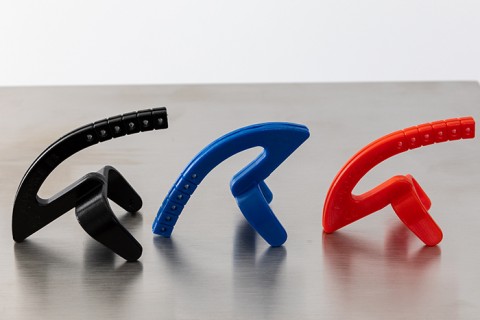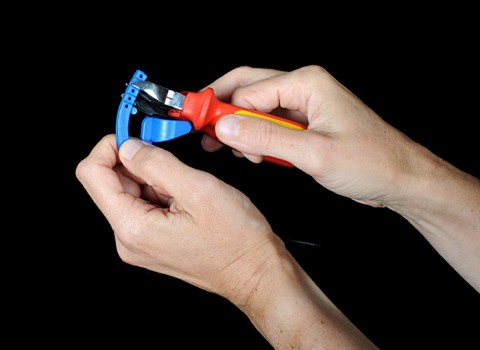Isoforce: Orthotic fabrication guidelines
The Isoforce outriggers were developed to optimise the treatment of contractures at the proximal interphalangeal (PIP) joint.
The Isoforce outriggers were developed to optimise the treatment of contractures at the proximal interphalangeal (PIP) joint. Biomechanical analysis of both extension and flexion variants have shown that the Isoforce outrigger can maintain both constant force transmission and force application angle throughout complete finger range of motion compared to current outriggers.1,2
For its simple and rapid application in daily clinic routine, the Isoforce outrigger was prefabricated in three different sizes. We outline the method for orthosis fabrication (Figure 1).

Materials and method for PIP extension orthosis fabrication
Orthotic base
2-3 mm orthotic material and padding; Velcro®
Outrigger
Isoforce extension outrigger; sizes E1, E2, and E3 (Figure 2) ; 2 x 2.5 mm (shaft diameter) self-clinching nuts
Pulley system
ClikStrip™ (WFR Corporation, NJ, USA) or Ni-Cd Strap (Team Kyosho International, Genuine Kyosho Parts, Japan); nylon thread 0.4 mm; 1 small bead; finger strap; super glue

The time required for orthosis fabrication is approximately 1.5 – 2 hours. The orthotic base is customized in 50-70° flexion of the metacarpophalangeal joint, padding is applied at the dorsal part of the base (Figure 3). A heated nut is placed into the orthotic material at the height of the PIP joint axis on both sides.
After choosing the appropriate outrigger size and fixation of the finger strap with nylon thread, the outrigger can be fitted: a 90° traction angle is created either by choosing the correct outrigger hole and if necessary shortening the outrigger at its predetermined breaking point with a side cutter (Figure 4) or lengthening the nylon thread as required.


The ClikStrip or Ni-Cd Strap can then be assembled and fitted as follows:
- After cutting the lock clip from the strap, the square distal strap end is rounded off and pierced to insert and fix the nylon thread
- The fastener is fixed on the dorsal part of the orthosis proximal to the metacarpal head; additional pliable orthosis material is fixed to the base and the fastener is then attached with glue and fixed with additional thinner strips of orthosis material over the base (Figure 5)
- The strap is shortened and introduced into the fastener; the proximal end of the strap is wrapped in padding material
- A bead is fixed to a nylon thread, inserted in the outrigger hole, guided through the outrigger channel and knotted to the distal part of the strap
To ensure correct function during use, the nylon thread spanning from the outrigger to the strap must always pass through the provided thread guide of the outrigger (Figure 5).

Conclusion
This orthosis is a low cost, highly aesthetic and minimal movement restricting solution for treating all PIP contractures, particularly for flexion contractures above 30°. As for any dynamic orthosis, fabrication needs a skilled therapist and time. However, as all the biomechanical demands of constant force transmission and force application angle of 90° are met by the Isoforce outrigger, the need for control sessions is low.
In our clinic, patients are especially satisfied with the wearing comfort of this novel orthosis.
Since June 2021, the Isoforce outrigger has been manufactured and marketed internationally by Orfit Industries.
References
- Marrel M, Jörn Good U, Marks M, Herren DB, Goldhahn J. Isoforce: A new outrigger system for static progressive orthotic interventions of the proximal interphalangeal joint with constant force transmission-Results of a biomechanical study. J Hand Ther. 2016, 29: 451-8.
- Voss K, Marrel M, Frouzakis R, Marks M, Jörn Good U. ISOFORCE-Ausleger: Ein biomechanisch optimierter Schienenausleger zur Behandlung von PIP-Kontrakturen. Promanu: Organ der Schweizerischen Gesellschaft für Handrehabilitation. 2013;24(1):10-13.